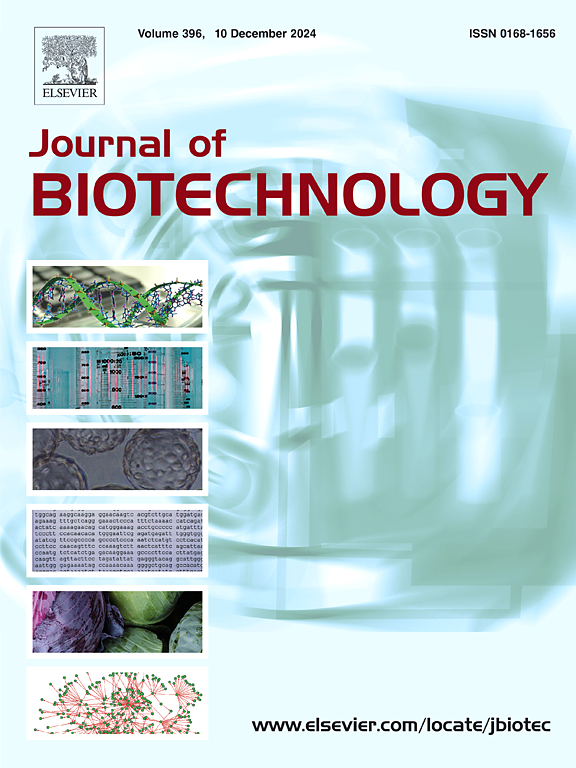Enhancement of the production of terpenoid and flavonoid secondary metabolites in the ground and aerial parts of licorice composite plant in a hydroponic system
IF 4.1
2区 生物学
Q2 BIOTECHNOLOGY & APPLIED MICROBIOLOGY
引用次数: 0
Abstract
Hairy roots mediated by Agrobacterium rhizogenes can be obtained from the composite plants (plants with hairy roots and untransformed aerial parts) by ex vitro method. Composite plants can produce higher amounts of secondary metabolites by merging hydroponic systems. This provides a stable condition for composite plants, in which various metabolites are produced in different parts. In the present study, composite plants of Glycyrrhiza glabra were produced under ex vitro conditions and transferred into a hydroponic culture medium to produce and extract secondary metabolites. The results showed a 4.8- and 1.8-fold enhancement in the expressions of SQS1 and bAS genes in the roots of the composite plants compared to the control group, respectively. The levels of glycyrrhizin (1.7) and glabridin (3.5) were higher in the leaves of the composite plants compared to the controls. Moreover, higher amounts of glabridin (1.7) were observed in the roots of the composite plants compared to the control group. Investigation of the oxidative enzymes in the composite plants and control group revealed that the plants used more secondary metabolites through Agrobacterium inoculation. The plants needed more antioxidant enzymes to counter the release of oxygen-free radicals in control conditions, but composite plants used secondary metabolites as scavengers. Data revealed that composite plants managed to produce high amounts of various secondary metabolites in a hydroponic system.
水培系统下甘草复合植物地上部和地上部萜类和类黄酮次生代谢物产量的提高。
发根农杆菌介导的毛状根可在复合植物(毛状根和未转化的地上部植物)中获得。复合植物可以通过合并水培系统产生更多的次生代谢物。这为复合植物在不同部位产生各种代谢物提供了稳定的条件。本研究在离体条件下培育光甘草复合植株,转入水培培养基中产生并提取次生代谢物。结果表明,与对照组相比,复合植物根系中SQS1和bAS基因的表达量分别增加了4.8倍和1.8倍。与对照相比,复合植物叶片中甘草酸苷(1.7)和光甘草定(3.5)的含量较高。此外,与对照组相比,在复合植物的根中观察到更高的光甘草定含量(1.7)。对复合植株和对照植株氧化酶的研究表明,接种农杆菌后,复合植株对次生代谢物的利用增加。在控制条件下,植物需要更多的抗氧化酶来对抗氧自由基的释放,但复合植物使用次生代谢物作为清除剂。数据显示,复合植物在水培系统中能够产生大量的各种次生代谢物。
本文章由计算机程序翻译,如有差异,请以英文原文为准。
求助全文
约1分钟内获得全文
求助全文
来源期刊

Journal of biotechnology
工程技术-生物工程与应用微生物
CiteScore
8.90
自引率
2.40%
发文量
190
审稿时长
45 days
期刊介绍:
The Journal of Biotechnology has an open access mirror journal, the Journal of Biotechnology: X, sharing the same aims and scope, editorial team, submission system and rigorous peer review.
The Journal provides a medium for the rapid publication of both full-length articles and short communications on novel and innovative aspects of biotechnology. The Journal will accept papers ranging from genetic or molecular biological positions to those covering biochemical, chemical or bioprocess engineering aspects as well as computer application of new software concepts, provided that in each case the material is directly relevant to biotechnological systems. Papers presenting information of a multidisciplinary nature that would not be suitable for publication in a journal devoted to a single discipline, are particularly welcome.
 求助内容:
求助内容: 应助结果提醒方式:
应助结果提醒方式:


